If you're an engineer or electronics enthusiast looking to understand SMD resistor code lookup, SMD resistor markings explained, or understanding resistor tolerance codes, you're in the right place. This guide will break down everything you need to know about surface-mount device (SMD) resistor codes, including how to read markings on common sizes like 0603 resistor value and 0805 resistor identification. We'll start with a quick overview and then dive into the details to ensure you can confidently work with these tiny but critical components.
In short, SMD resistor codes are markings on the component that indicate their resistance value and tolerance. These codes can be numeric (like 3-digit or 4-digit codes) or based on the EIA-96 system. By the end of this post, you'll know how to decode these markings and apply this knowledge to your projects.
What Are SMD Resistors and Why Do They Matter?
SMD resistors, or surface-mount device resistors, are small electronic components used to limit current or divide voltage in circuits. Unlike traditional through-hole resistors with long leads, SMD resistors are designed to be mounted directly onto the surface of a printed circuit board (PCB). Their compact size makes them ideal for modern, densely packed electronic devices like smartphones, laptops, and IoT gadgets.
Understanding SMD resistor codes is crucial for engineers because these components are often too small to have detailed labels. Instead, manufacturers use concise markings to convey resistance values and tolerance levels. Misreading these codes can lead to incorrect component selection, causing circuit failures or suboptimal performance. Whether you're working on a prototype or repairing a device, decoding these markings accurately is a fundamental skill.
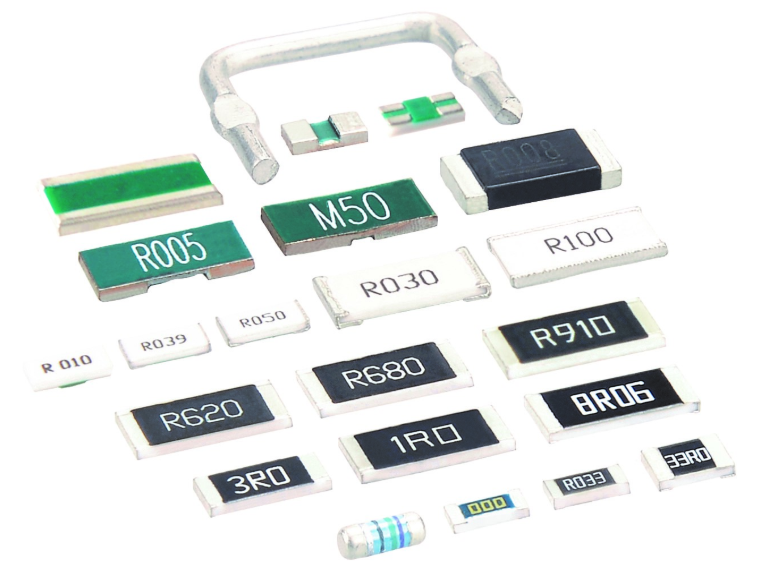
Understanding SMD Resistor Markings
SMD resistor markings are typically printed on the top surface of the component. Due to their small size, these markings are condensed into a few digits or characters. Let's explore the common types of codes used for SMD resistor markings explained.
Three-Digit Code System
The three-digit code is one of the most common marking systems for SMD resistors. In this system, the first two digits represent the significant figures of the resistance value, while the third digit indicates the multiplier (the number of zeros to add).
For example:
- A marking of "103" means 10 (from the first two digits) followed by 3 zeros, resulting in a resistance of 10,000 ohms or 10 kΩ.
- A marking of "471" translates to 47 followed by 1 zero, equaling 470 ohms.
This system is straightforward once you get the hang of it, but always double-check to avoid mistakes, especially with similar-looking numbers.
Four-Digit Code System
For more precise resistors or those with higher resistance values, a four-digit code is used. Here, the first three digits are the significant figures, and the last digit is the multiplier.
For instance:
- A marking of "1001" means 100 followed by 1 zero, resulting in 1,000 ohms or 1 kΩ.
- A marking of "4992" translates to 499 followed by 2 zeros, equaling 49,900 ohms or 49.9 kΩ.
This system allows for finer granularity in resistance values, which is essential for precision circuits.
EIA-96 Code System
The EIA-96 code system is used for SMD resistors with tighter tolerance levels (typically 1% or better). This system uses a two-digit code followed by a letter. The two digits correspond to a base value from a standardized table, and the letter indicates the multiplier.
For example:
- A marking of "24C" might mean a base value of 174 (from the EIA-96 table) multiplied by 100 (for the letter C), resulting in 17,400 ohms or 17.4 kΩ.
This system can be trickier to decode without a reference table, but many online tools and charts are available for quick SMD resistor code lookup.
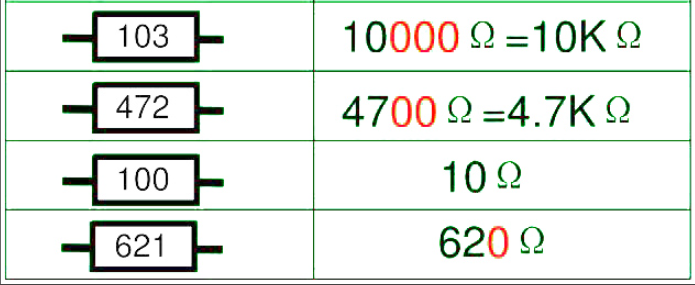
Common SMD Resistor Sizes: 0603 and 0805
SMD resistors come in various package sizes, denoted by a four-digit code that represents their dimensions in inches or millimeters. Two of the most common sizes are 0603 and 0805. Knowing how to identify these sizes is key for 0603 resistor value and 0805 resistor identification.
0603 Resistor Value
The 0603 package measures 0.06 inches by 0.03 inches (or 1.6 mm by 0.8 mm in metric). These are among the smallest SMD resistors commonly used, making their markings harder to read without magnification. Despite their size, they follow the same coding systems (3-digit, 4-digit, or EIA-96) as larger components.
For example, a 0603 resistor marked "102" would have a resistance of 1,000 ohms or 1 kΩ. Due to their small size, engineers often use a magnifying glass or a digital microscope to read the markings accurately.
0805 Resistor Identification
The 0805 package is slightly larger, measuring 0.08 inches by 0.05 inches (or 2.0 mm by 1.25 mm). This size is easier to handle and read compared to 0603, but the marking system remains the same.
For instance, an 0805 resistor marked "473" indicates a resistance of 47,000 ohms or 47 kΩ. These resistors are widely used in consumer electronics due to their balance of size and readability.
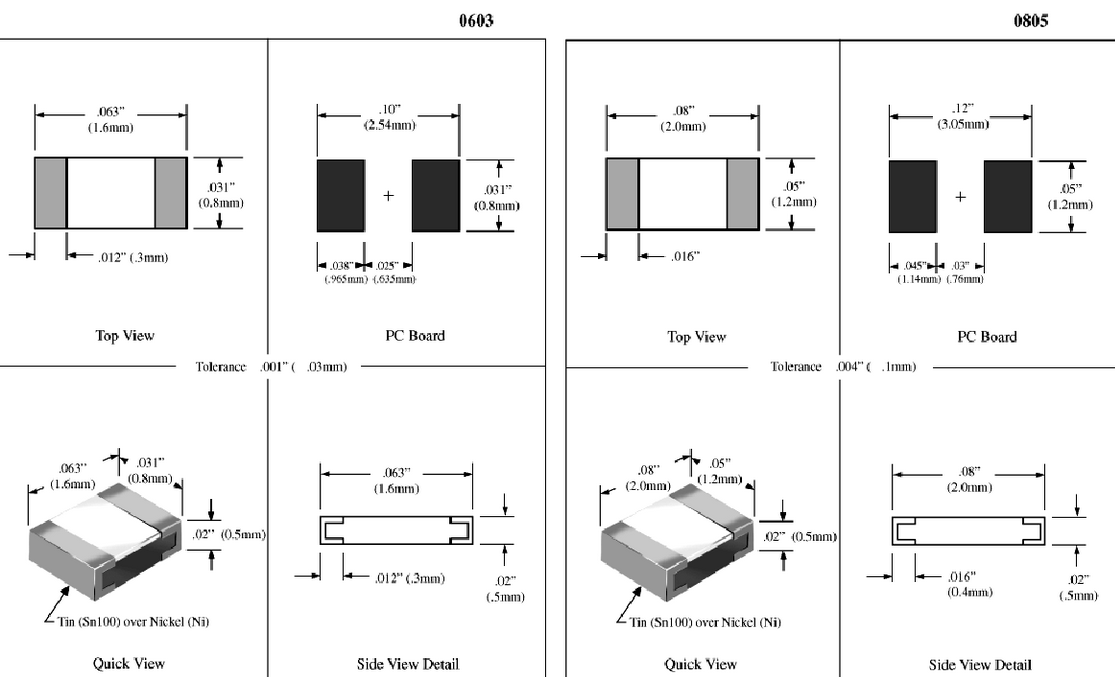
Understanding Resistor Tolerance Codes
Beyond resistance values, SMD resistors also have markings or associated data indicating their tolerance, which is the allowable deviation from the stated resistance value. Understanding resistor tolerance codes is vital for selecting the right component for your circuit's needs.
Tolerance is usually expressed as a percentage. For example:
- A 5% tolerance means the actual resistance can vary by ±5% of the marked value. So, a 1 kΩ resistor with 5% tolerance could range from 950 ohms to 1,050 ohms.
- A 1% tolerance offers tighter control, with a 1 kΩ resistor ranging from 990 ohms to 1,010 ohms.
In SMD resistors, tolerance is often not marked directly on the component due to space constraints. Instead, it may be indicated in the part number or datasheet. However, in the EIA-96 system, the tolerance is implied to be 1% or better.
Choosing the correct tolerance is critical for applications like precision analog circuits, where even small variations can affect performance. For general-purpose digital circuits, a 5% tolerance is often sufficient.
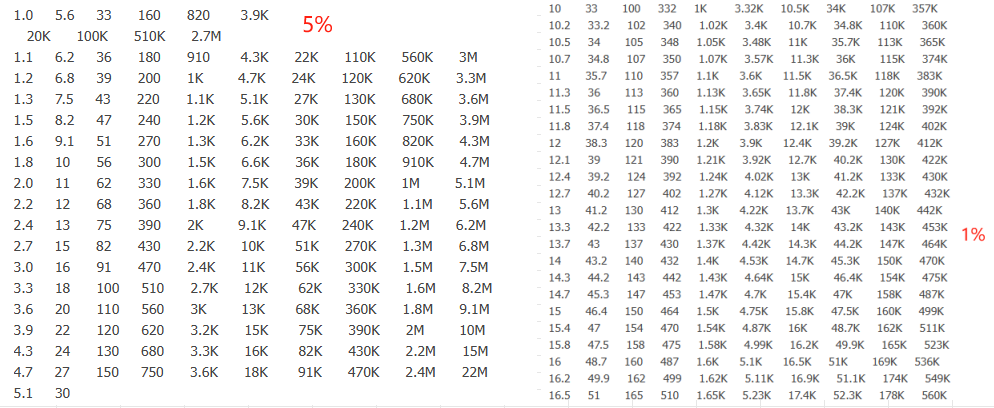
How to Perform an SMD Resistor Code Lookup
If you're struggling to decode an SMD resistor marking, an SMD resistor code lookup tool can be a lifesaver. Many online calculators and mobile apps allow you to input the marking and receive the resistance value and tolerance instantly. Here's how to use them effectively:
- Identify the marking on the resistor using a magnifying tool if necessary.
- Note whether it's a 3-digit, 4-digit, or EIA-96 code.
- Enter the code into a trusted online tool or refer to a standard EIA-96 table for complex codes.
- Cross-check the result with the expected value for your circuit to ensure accuracy.
These tools are especially helpful when dealing with faded or unclear markings, which can happen with older components or after rework.
Practical Tips for Working with SMD Resistors
Decoding SMD resistor codes is just the first step. Here are some practical tips to help you work with these components effectively:
- Use Proper Tools: Invest in a good magnifying glass or a digital microscope to read small markings, especially on 0603 resistors.
- Organize Components: Keep SMD resistors in labeled compartments or tape strips to avoid mixing up values during assembly.
- Verify with a Multimeter: If you're unsure about a marking, measure the resistance with a multimeter to confirm the value.
- Refer to Datasheets: Always check the manufacturer's datasheet for tolerance and power rating information not included in the marking.
- Practice Soldering: SMD resistors require precise soldering skills. Use a fine-tip soldering iron and avoid excessive heat to prevent damage.
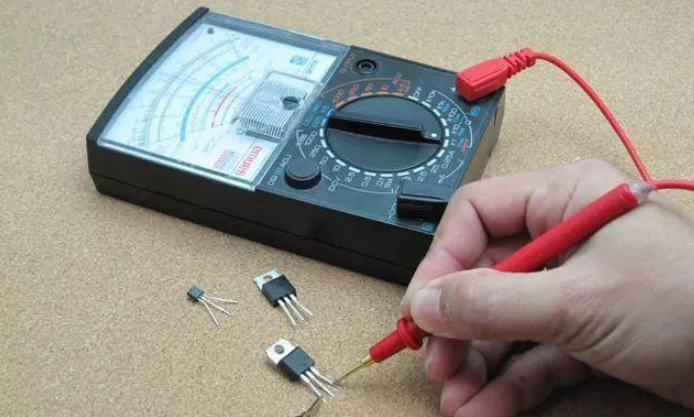
Common Challenges and How to Overcome Them
Working with SMD resistors can present challenges, especially for beginners. Here are some common issues and solutions:
Illegible Markings: Over time, markings can wear off or become hard to read. Use a multimeter to measure the resistance directly if the code is unclear.
Confusing Codes: The difference between a 3-digit and 4-digit code can be subtle. Pay attention to the resistor's size and context in the circuit to determine the correct system.
Tolerance Misunderstandings: Not knowing the tolerance can lead to circuit issues. When in doubt, assume a standard 5% tolerance for unmarked components and consult the datasheet for confirmation.
Why Accurate SMD Resistor Identification Matters
Accurate identification of SMD resistors directly impacts the reliability and performance of your electronic designs. Using a resistor with the wrong value or tolerance can cause issues like voltage drops, signal distortion, or even component failure. For example, in a voltage divider circuit, a 10 kΩ resistor with a 5% tolerance might result in an output voltage varying by several millivolts, which could be unacceptable in precision applications.
By mastering SMD resistor codes, you ensure that your circuits function as intended, saving time and reducing costly errors during prototyping and production.
Conclusion
Decoding SMD resistor codes doesn't have to be a daunting task. With this comprehensive guide, you now have the tools to tackle SMD resistor code lookup, understand SMD resistor markings explained, and grasp understanding resistor tolerance codes. Whether you're identifying a 0603 resistor value or working on 0805 resistor identification, these skills will enhance your efficiency and accuracy as an engineer.
Remember to use the right tools, refer to datasheets, and leverage online resources when needed. With practice, reading SMD resistor codes will become second nature, allowing you to focus on designing innovative and reliable electronic solutions. Keep this guide handy for your next project, and you'll be well-prepared to handle any SMD resistor challenge that comes your way.
 ALLPCB
ALLPCB







